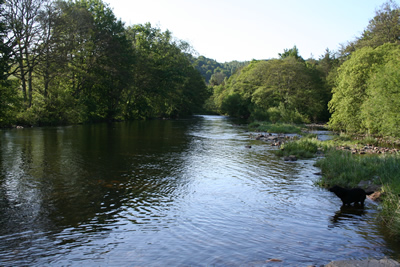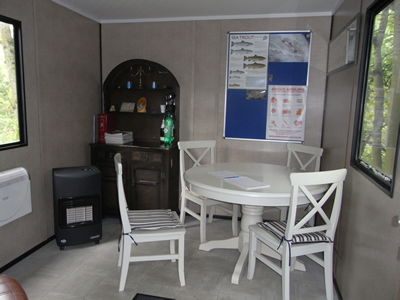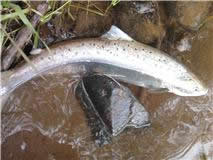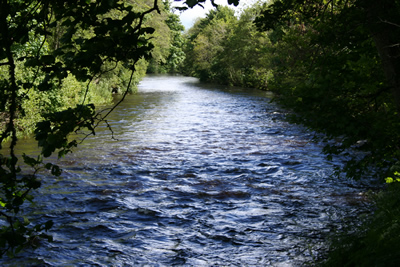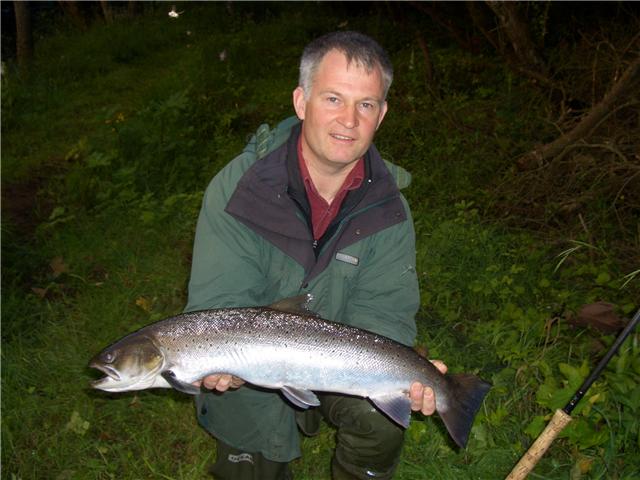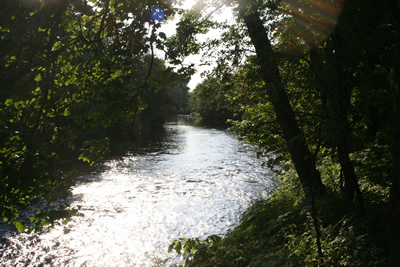The last week has been strange weatherwise, explained by meteorologists as caused by the jet stream overhead and resulting pressure-induced high winds with some rain. Trees have been brought down, branches broken and an unseasonal flurry of autumn-like leaves scattered into the river by huge gusts, with their catspaws ruffling the surface of the pools. With water levels at a generous late spring level, and the water clean after the last two weeks of rain leaching of the topsoil, the river has been in perfect condition. Not many fish have been seen, but we caught seven up to 12 lbs, with Frank’s Stream on Indies Beat and Tyndals Pool on Milton Beat doing well. Late flurries of activity from small shoals running through the beats have been seen late in the day in the evening light, especially in the Red Brae. Salmon have been hooked and lost in Tyndals, Indies and Tollmuir Pools and quite a few, more than anywhere else, seen in Marcus House Pool.
This is the view from the head of the Flats (Milton Beat) downstream towards Castle Stream footbridge and Red Brae (Castle Beat) beyond.
Seven fish isn’t bad for a late May week at Finavon, but in the context of this year’s much improved spring run, it was mildly disappointing. We should I believe have caught a dozen salmon and a few more sea trout. Ken Dickinson reported some big sea trout in Tollmuir Pool, including a really big fish well into double figures. On the same occasion Bill Cook hooked a nice spring salmon off the big boulder in the same Pool, but the fish decided it would return to Montrose Basin and left Bill bereft in the process.
Inside the Bogardo Beat hut which is located on the South bank of the tail of Haughs Pool (Bogardo Beat).
As I write this bulletin on Sunday evening the wind is still breaking branches and the river is fining down, but still very fishable. If the weather warms up a bit we should start to catch sea trout in the dusk and, later in the month of June, at night. I expect Inshewan, Cortachy & Downie Park to strat reporting good sea trout catches in the next few days. Meanwhile, the four FCW sea trout syndicates who will be fishing all the pools downstream of the Haughs Aqueduct, start their season on the 6th of June and, ever optimistic, I am predicting a better sea trout season here than any in the last five.
I am off to Greenland to attend the NASCO conference for a week on Thursday. Depending on whether there is something to report, I may slip in one more blog before I go; otherwise, it will be after the 10th of June when the next bulletin arrives. In the meantime, to all our rods at Finavon, and elsewhere on the South Esk, tight lines!
TA
